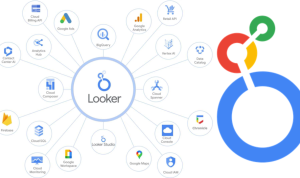Common Mistakes to Avoid When Deploying BI Systems is crucial for organizations looking to harness the power of business intelligence effectively. Implementing BI systems is no small feat; it requires careful planning, execution, and ongoing management. Understanding the common pitfalls that many organizations encounter during deployment can significantly improve the chances of success and maximize the value extracted from these systems.

From neglecting data quality to underestimating user training, each mistake can lead to wasted resources and missed opportunities. This overview will guide you through the frequent errors encountered in BI system deployments and offer insights on how to navigate these challenges to ensure a smoother and more productive implementation.
In our fast-paced, ever-evolving world, the importance of adaptability and innovation cannot be overstated. Organizations and individuals alike often face the dual challenge of maintaining relevance while also striving for growth. This article explores various strategies that can help foster adaptability and drive innovation, ensuring that both businesses and individuals can thrive in an uncertain future.To begin with, let’s examine the concept of adaptability.
At its core, adaptability is the ability to adjust to changes in the environment, be it personal or professional. In a workplace context, adaptability can manifest in various forms, such as being open to new ideas, adjusting to shifting market demands, or embracing new technologies. The significance of adaptability is particularly evident in today’s increasingly volatile economic climate, where disruption seems to be the only constant.One of the key factors that contribute to adaptability is a growth mindset.
Coined by psychologist Carol Dweck, a growth mindset is the belief that abilities and intelligence can be developed through dedication and hard work. This perspective fosters resilience, encourages continuous learning, and ultimately leads to greater adaptability. Individuals and organizations that cultivate a growth mindset are better equipped to face challenges and seize opportunities for innovation.To nurture a growth mindset, organizations can implement several strategies.
Firstly, they can encourage a culture of learning by providing opportunities for professional development. This could include workshops, training sessions, or even access to online courses. By investing in their employees’ growth, companies create an environment where individuals feel empowered to explore new ideas and approaches.Another effective way to promote a growth mindset is through constructive feedback. Rather than focusing solely on performance evaluations, organizations should emphasize the learning process.
Providing feedback that highlights areas for improvement, alongside recognition of achievements, helps individuals understand that their skills can be enhanced over time. This approach not only fosters adaptability but also encourages innovation as employees feel more confident in experimenting with new concepts.Moreover, collaboration plays a vital role in adaptability and innovation. When individuals work together, they share diverse perspectives and insights that can lead to creative problem-solving.
Organizations can facilitate collaboration by creating cross-functional teams or encouraging open communication channels. By breaking down silos and promoting teamwork, companies can harness the collective intelligence of their workforce, driving both adaptability and innovative thinking.Innovation, on the other hand, is the act of introducing something new or making significant improvements to existing products, services, or processes. It is a crucial driver of growth and competitiveness in any industry.
To foster an innovative culture, organizations must create an environment that encourages experimentation and risk-taking.One effective tactic for promoting innovation is the implementation of design thinking. This human-centered approach to problem-solving encourages teams to empathize with users, define problems, ideate solutions, prototype, and test. By focusing on the end-user experience, organizations can develop products and services that truly meet customer needs, thereby enhancing their market position.Additionally, organizations should not shy away from embracing failure as part of the innovation process.
Often, the fear of failure can stifle creativity and prevent individuals from taking risks. By fostering a safe space for experimentation, where failures are viewed as learning opportunities rather than setbacks, organizations can unleash the full potential of their workforce. Celebrating both successes and failures alike creates a culture of innovation that thrives on exploration and discovery.Furthermore, staying informed about industry trends and technological advancements is essential for both adaptability and innovation.
In a rapidly changing landscape, organizations must be proactive in monitoring shifts in consumer behavior, emerging technologies, and competitive dynamics. This can be achieved through regular market research, participation in industry events, and networking with thought leaders. By staying attuned to the latest developments, organizations can anticipate changes and adapt their strategies accordingly.Another crucial aspect of fostering adaptability and innovation is empowering employees.
When individuals feel trusted and accountable, they are more likely to take initiative and contribute their ideas. Organizations can empower their employees by delegating decision-making authority, encouraging autonomy, and providing the resources needed to pursue innovative projects. This sense of ownership not only boosts morale but also cultivates a culture where innovation can flourish.Finally, organizations should recognize the importance of diversity in driving adaptability and innovation.
A diverse workforce brings together individuals with different backgrounds, experiences, and perspectives, which can lead to more creative solutions. This diversity can be achieved through inclusive hiring practices, promoting equal opportunities, and creating a workplace where everyone feels valued and heard. Research has shown that diverse teams are more innovative and better equipped to tackle complex challenges.In conclusion, the ability to adapt and innovate is essential for success in today’s dynamic environment.
By fostering a growth mindset, promoting collaboration, embracing experimentation, staying informed, empowering employees, and valuing diversity, organizations can cultivate a culture of adaptability and innovation. As individuals and organizations embrace these strategies, they will not only navigate the uncertainties of the future but also thrive in the face of change. The journey towards adaptability and innovation is ongoing, but by taking these steps, we can ensure that we remain relevant and competitive in an ever-changing world.




